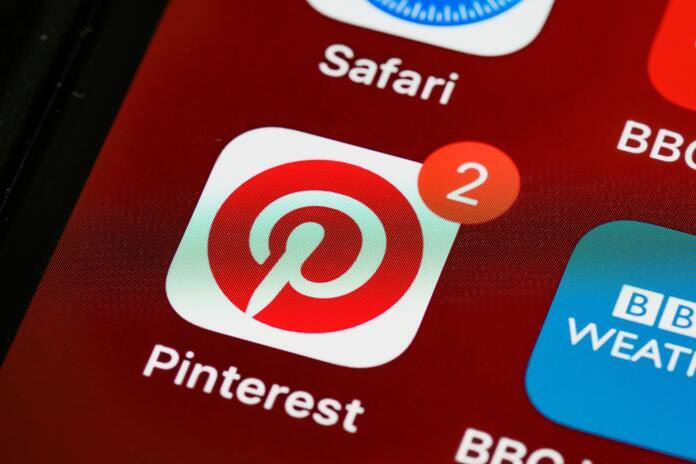Pinterest (NYSE:PINS)
Despite major changes to the company’s underlying fundamentals over the last year, Pinterest’s (NYSE:PINS) stock has remained relatively stable during the previous 12 months. One year ago, the platform’s long-term sustainability was called into doubt owing to user retention concerns. While Pinterest’s user growth is now healthy, a weak demand environment has delayed a return to strong revenue growth. Pinterest has a promising future and reasonably priced shares, even though the short term will likely remain challenging.
One of the most common complaints about Pinterest has been that its users could be more engaged, but the firm is working hard to address this issue. Pinterest’s most valuable audience comprises mobile app users, who account for over 80% of all impressions. The first quarter saw a spike of 7% in new mobile app users throughout the United States and Canada. In the first quarter, earnings from mobile app users climbed by 16% year over year.
Increased ad delivery and more advertiser-friendly costs result from Pinterest’s increased engagement. During the first three months of 2016, Pinterest increased ad impressions by over 30% while increasing user engagement. CPAs for performance advertisers are going down by 8% due to the improved efficiency of Pinterest’s ad marketplace. Ad performance on Pinterest is greater than advertisers first anticipated; thus, demand for Pinterest’s measuring tools is expected to rise.
In recent times, demand has been more limited than supply on Pinterest. Therefore, Pinterest considers the potential of third-party ad demand to be a major advantage. Because of Amazon’s extensive selection of relevant shoppable ad content and user-friendly purchasing process, the company has been brought on as Pinterest’s first partner. Not only Amazon’s retail division but Amazon’s ad platform, in general, is promoted on Pinterest.
Pinterest’s ad technology is also evolving, which bodes well for the company’s future earnings potential. Premiere Spotlight, a premium awareness option that gives featured prominence on Pinterest’s search page to featured brands, was introduced in the first quarter of 2023. Premiere Spotlight, on average, has greater CTRs than traditional video awareness commercials. The debut of mobile deep linking in Q3 2022 was a major factor in the first-quarter 2022 increase of 40% YoY in shopping revenue. Pinterest’s conversion tracking features also continue to improve. Tealium has just incorporated Pinterest’s conversion API to increase platform use. In addition to onboarding advertisers like Wayfair, Pinterest is also onboarding advertisers like Wayfair.
Like the video, Pinterest remains integral to the platform’s narrative. Still, in this case, it’s a growth tailwind rather than a headwind. This is because video advertisements contribute disproportionately to total advertising income. Pinterest’s first-quarter growth in video content was approximately 40% QoQ. Dotdash Meredith, whose brands include Better Homes and Gardens, Brides, Food & Wine, and All Recipes, has agreed to become a publishing partner with Pinterest.
The first quarter’s revenue was up around 6% on a constant currency basis. Pinterest’s ad inventory has recently been severely limited due to low user counts. User numbers and engagement are rising rapidly now that the epidemic has passed. Still, ad demand is weak owing to economic uncertainty. It may take some time for this matter to be resolved. Still, once it does, Pinterest’s expansion is expected to increase significantly.
This should finally put to rest the absurd assumption that Pinterest is in irreversible decline since user growth has recovered to approximately where it was before the outbreak. There has been a recent uptick in the expansion of the user base, with mobile users leading the way. In the first quarter, the platform saw a year-over-year gain in Gen Z users in the double digits. Overall, user growth continues to lag well behind increases in engagement metrics like impressions, sessions, and time spent.
One of Pinterest’s biggest potential is to better monetize its non-North American user base. Many of these users need to be monetized more, while others are being under-monetized. A potential change in worldwide APRU growth rates may occur if Pinterest shifts its emphasis from first-party demand to third-party demand.
Despite the company’s efforts to cut infrastructure expenses, Pinterest’s gross margins have continued to fall. The demand environment is to blame, along with factors like the proliferation of online video and the expansion of untapped markets abroad. Gross profit margins for Pinterest could grow back to around 80% as advertising spending recovers, especially if average revenue per user (ARPU) rises outside of North America.
As part of a recent cost-cutting initiative, Pinterest has reduced its physical footprint and laid off 4% of its personnel. However, this significantly impacted expenses in the first quarter, which inflated Pinterest’s operating loss. Pinterest still has more cost-cutting, but in a typical demand scenario, the company should be tremendously profitable as it grows.
The negative market environment has continued to be bad for Pinterest’s business. Still, the company’s fundamentals have improved greatly over the last year. Pinterest stands to gain when the market returns, whenever that may be. Pinterest, in the meanwhile, must show that it is making headway with foreign shoppers and monetizing its global user base.
Featured Image: Pexels









